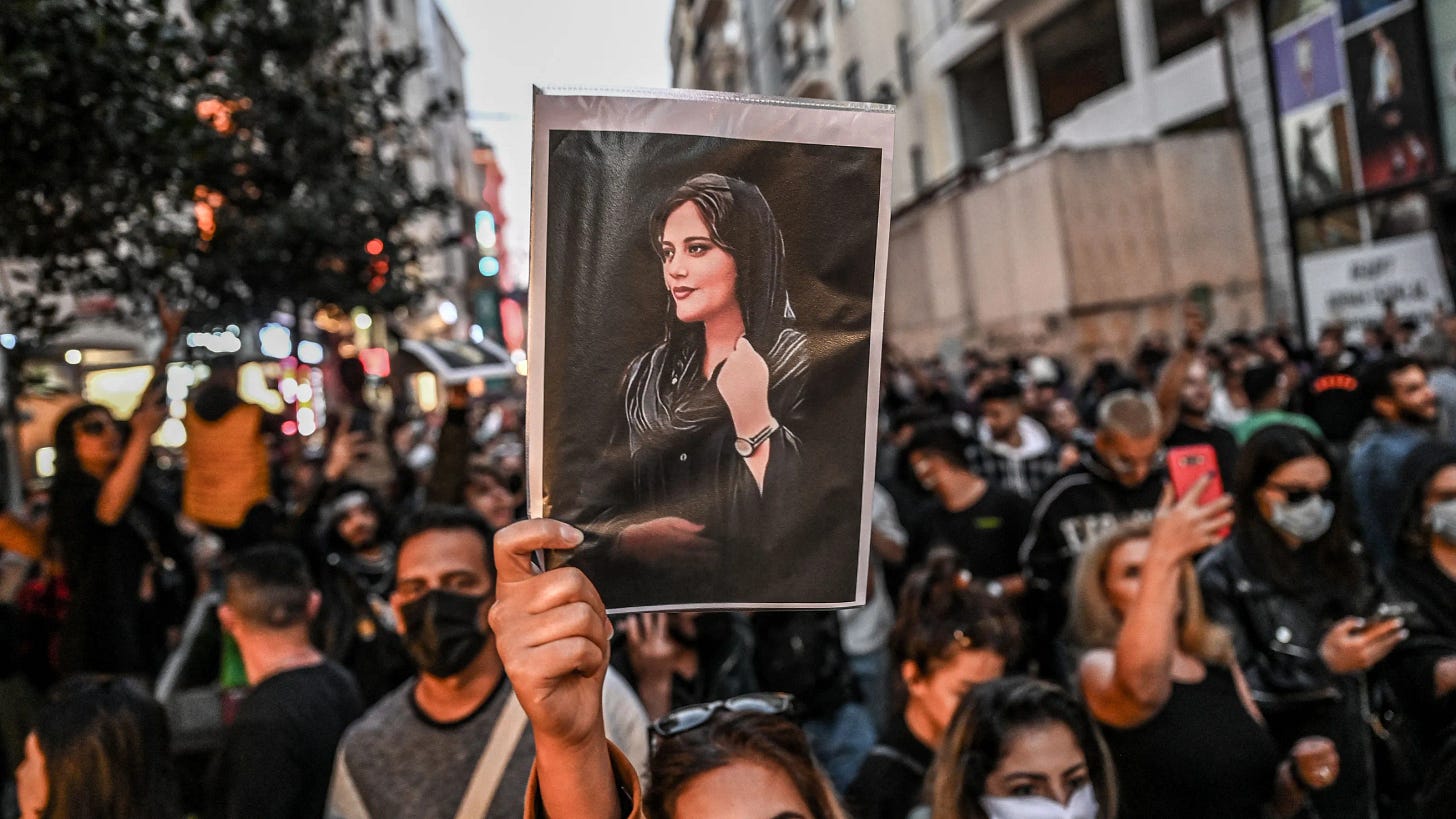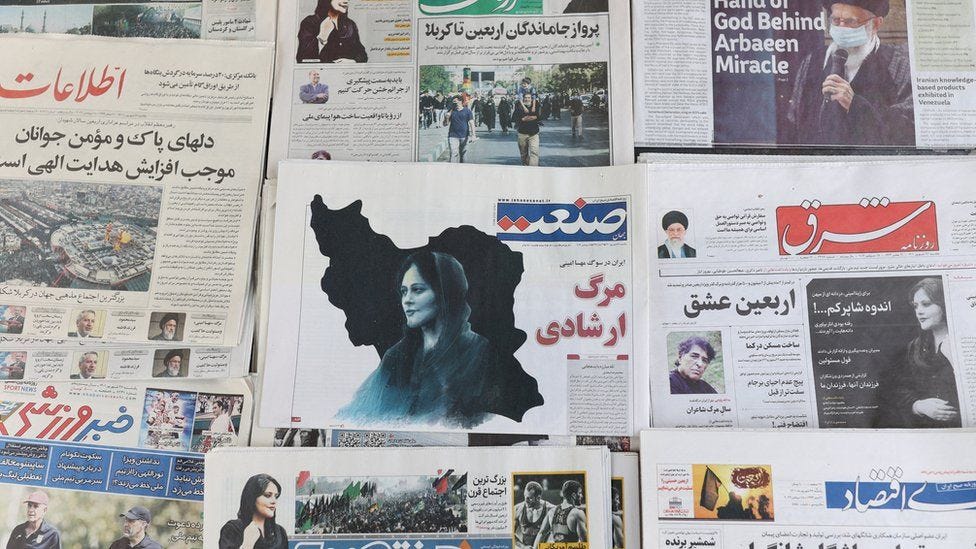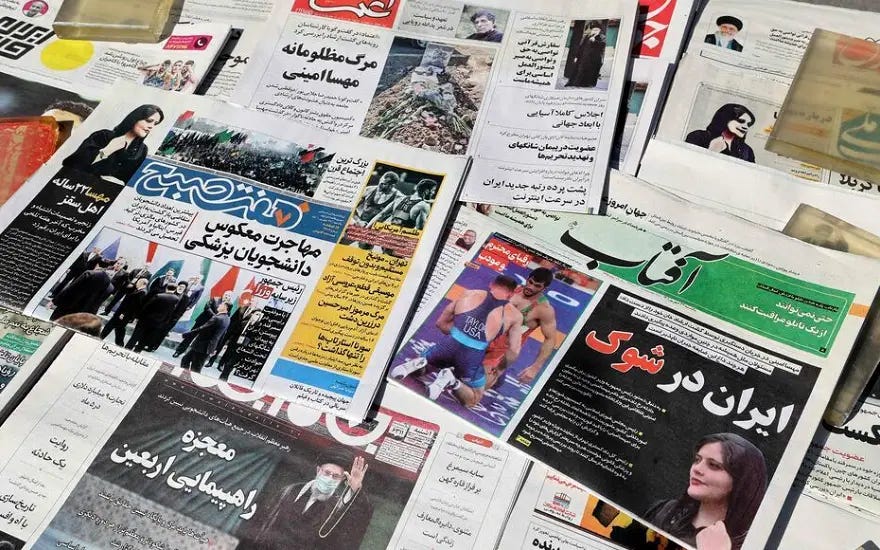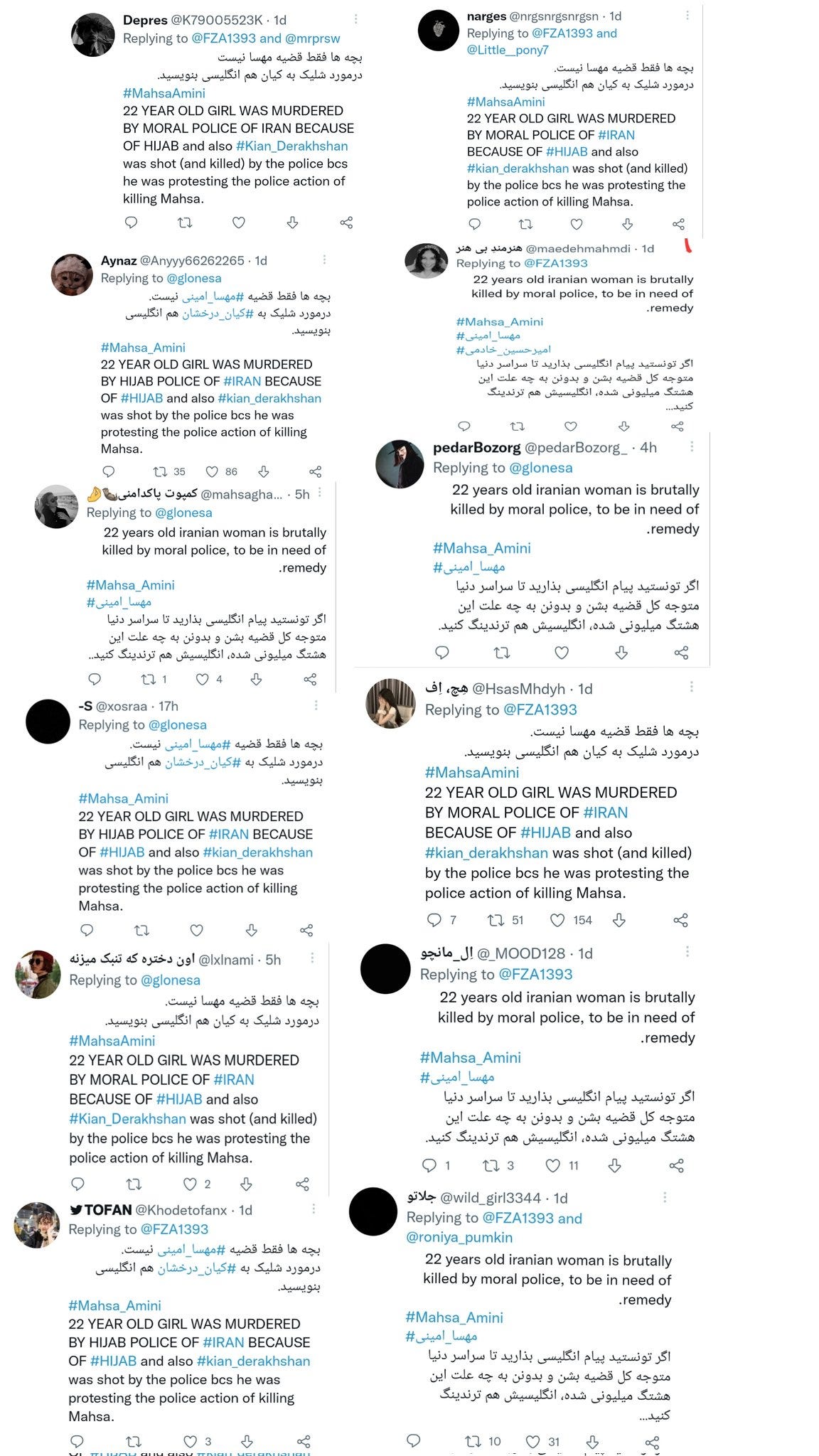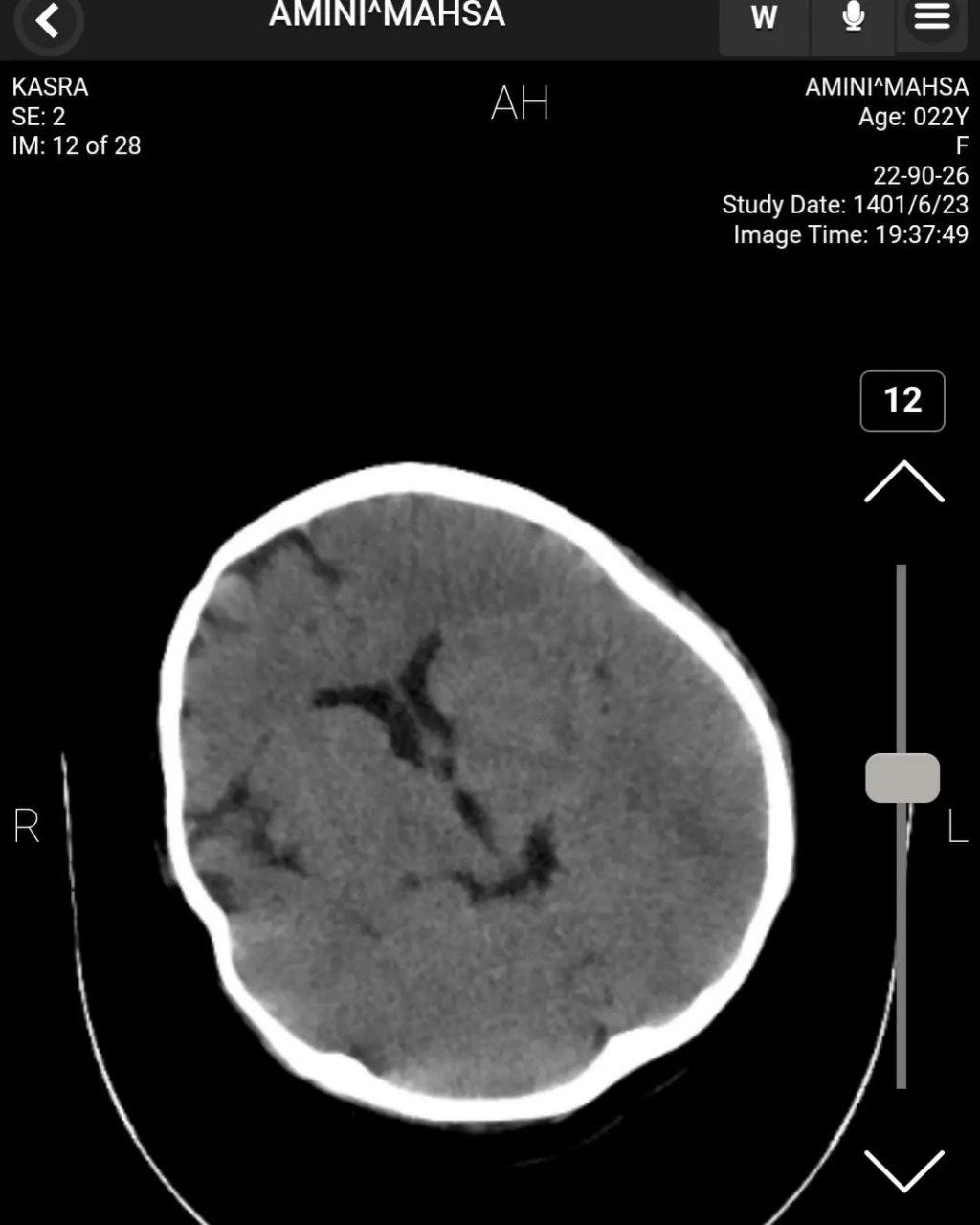The Death of Mahsa Amini - Color Revolution or Legitimate Protests in Iran?
A balanced view of the tragic death of Mahsa Amini and the unrest that followed in Iran.
I don’t write this article in order to defend or criticize the local laws and customs of the Islamic Republic of Iran, especially the mandatory dress code established after the 1979 revolution. I think every country has its own particularities and values, and it should find its path towards the future in accordance with its cultural, religious, and historical identity. Iran is a very complex country, with a lot of nuances and contradictions, which require a lot of study and analysis, for a comprehensive understanding of the subject. The Islamic Republic is not just a theocracy, is a country with thousands of years of history, and a very strong sense of identity and self-preservation. Iran is also one of the strongest countries in the region and its independent foreign policies have always been in contradiction with the United States' goal of hegemonic dominance of the Middle East. Therefore, anything that happens in Iran, especially sudden bursts of violent protests against the current establishment, should be viewed in a larger context, and not minimized to simplistic slogans promoted obsessively by the western media. The death of a young woman, in any country, is a tragedy not only for her family and friends, but also for society as a whole, and the reasons behind it should be clarified and those responsible should be punished. But the tragedy of Mahsa Amini’s sudden death should not be manipulated by perverted foreign forces and used as a catalyst for mass violence and unrest which could set Iran on the path of civil war and destruction, a path that will not benefit either the young generation of Iranians, be them religious or liberals, or the Middle Eastern region as a whole. The examples of Libya, Egypt, and Syria, countries where legitimate protests were hijacked by NATO and US-backed actors and used as pretexts for mass violence and destruction, should make us ask what is really happening in Iran. Are we witnessing just some legitimate protests provoked by the unfortunate passing of Mahsa Amini, or her tragedy is actively used by foreign powers as a tool of regime change in Iran?
On 16 September 2022, the Iranian society was shocked by the news of the death of Mahsa Amini, a 22-year-old woman of Kurdish ethnicity, after she was picked up by the so-called Guidance Patrol, a form of morality police, while she was in Tehran with her family. The reason for being picked up and sent to the guidance patrol station was the improper wearing of the hijab, the Islamic veil that women should wear in Iran, according to the local laws.
CCTV Footage of Mahsa Amini
According to the CCTV footage released by the Iranian authorities, Mahsa Amini was brought to the station on 13 September by a woman wearing a chador and is seen in a waiting hall collapsing after a few minutes. The rest of the video recording shows the paramedics arriving at the station, and Mahsa Amini being sent to the hospital with an ambulance. Three days after, Mahsa Amini died at the Kasra hospital in Tehran. Usually, this type of legal procedure involves sending the woman to the guidance patrol station where she is fined or given a lecture about Islamic values, before being released after one or two hours. Contrary to the popular opinion in the west, women who are taken by the morality patrol are not beaten or tortured, in worst cases, they pay fines, and are asked to come to the station a couple of times to attend classes of Islamic values. I don’t say if this is good or bad, I just state some facts.
Upon the news of her death, a series of protests started in Tehran, and later expanded in Amini’s home province of Kurdistan, as well as in Mashhad, Sari, Babol, and Oshnavieh. As of 25 September 2022, the date when this article was written, according to western media outlets the protests led to the death of around 50 people. The Iranian authorities presented videos of police officers being stabbed to death or set on fire by the protesters, as well as scenes of public violence which involved the destruction of state buildings, burning of police stations and cars, ambulances, fire trucks as well as looting of private shops and banks.
The protests were widely promoted in the west, through popular media news agencies and social media outlets. Videos of young Iranians throwing stones and fighting against police forces as well as young women who removed their scarves in public and even cut their hair became viral on the internet. Liberal and pro-feminist gatherings in support of the protests took place in the USA, Canada, Australia as well as various European countries. In Iran, almost all major television stations and newspapers presented the story of Mahsa Amini’s death and asked president Raisi’s administration for a thorough investigation and the punishment of those responsible for the tragedy.

On Twitter the #Mahsa_Amini hashtag has been retweeted more than 40 million times, becoming the most popular on the platform, ten times more popular than any other current hashtag (https://www.iranintl.com/en/202209239501). Upon a little bit of research on the social platform, one could easily observe that a lot of fake accounts promote similar texts, slogans, and anti-regime calls while encouraging acts of public disobedience and violence.
Other accounts ask for foreign intervention, especially for internet access for ordinary Iranians, after the authorities blocked access on several social media platforms in the cities where the protests started. Is well-known that social media is often used as a tool for inciting acts of violence during mass protests and riots. US Secretary of State Anthony Blinken was quick to announce on his Twitter account that he issued a “General License” meant to bypass Iran’s state internet censorship and bring western internet to ordinary Iranians, with Elon Musk, the owner of Starlink joining the party instantly.

This means a direct involvement of the United States in the internal situation in Iran, and the promotion of the US narrative among Iranians, with the clear goal of seeding unrest in the country and advancing the possibility of regime change by a popular uprising and through violent means. The USA is using the death of Mahsa Amini as a way of advancing its foreign policy and its internet and satellite resources to foment dissent and public protests in Iran. The regime in Washington is doing all of this in an overt manner, involving itself in the internal business of a sovereign nation. The death of a young woman at just 22 years of age is always an emotional event, which can trigger a lot of popular reactions, therefore the story of Mahsa Amini was the perfect opportunity that the USA needed to spark yet another round of violence inside Iran, hoping that this time the current establishment will be toppled and replaced with one that can be easily controlled and manipulated. And if the regime change strategy doesn’t work, the USA hopes that at least mass riots and public violence will weaken Iran from the inside and disturb its social and economic development.
Before denying the regime-change thesis as a conspiracy theory or just labeling it as the excuse of a failed theocratic regime that is hated by its own people, one should understand the pivotal role led by Iran in the new international multi-polar world order, its recent admission as a key member of the Shanghai Cooperation Organization (https://www.aljazeera.com/news/2022/9/15/iran-signs-memorandum-join-shanghai-cooperation-organisation), its strong partnerships with China and Russia, the current situation of the JCPOA nuclear agreement, as well as the recent unrest in Iraq, Iran’s neighboring country.
Of course, the ordinary westerner, especially the superficial liberal one, fed on a daily basis with populist slogans devout of real meanings and values, has neither the time nor the interest to comprehend the complicated international situation and the role that Iran plays at a global level. For the ordinary westerner Iran is just a theocracy where people’s rights are denied, therefore if some people decide to go on the path of mass violence is ok, because they just want “democracy”. We heard this before in Libya, Egypt, Syria, Hong Kong, and many other parts of the world and we saw how it ended, in bloodshed and loss of life which could have been avoided. This thirst for “democracy” is the perfect cover under which the US has toppled foreign leaders, killed people, and brought down governments who refused to be simple obedient vassals. The situation is always more complicated than what US-backed media channels like CNN or FOX News present, and the oversimplification of things has the explicit aim of hiding the truth from the viewer, leaving him with a shallow view of a very complex situation. And this is exactly how US propaganda feeds itself, on ignorance, emotional manipulation, and superficiality.
Therefore is not at all surprising, and hardly a coincidence that on 16 September 2022, the same day as Mahsa Amini’s passing, the US propaganda New York Times publication stated that Iran’s Supreme Leader Ali Khamenei has fallen gravely ill (https://www.nytimes.com/2022/09/16/world/middleeast/irans-supreme-leader-ayatollah-ali-khamenei-ill.html). Regardless if the news about Khamenei’s health is true or not, is very probable that the start of the public protests was bolstered by Amini’s death, and amplified by foreign forces in order to weaken the leadership in such a delicate moment. The death of Iran’s supreme leader would be the perfect chance to push for regime change in the country, therefore the US wouldn’t think twice about how to speculate this opportunity, by any means necessary.
At the current moment, there is no actual proof that Mahsa Amini was beaten by the Guidance Patrol forces. The allegation about this was made just by fake accounts on social media and propagated obsessively on anti-Iranian news agencies, TV stations, and the internet. The CCTV footage shows the young woman collapsing inside the station shortly after arrival. The CT scans of her brain have been leaked online, and although there is no 100% proof of their authenticity, they show no brain injury or sign of head violence but show that Mahsa Amini had undergone head surgery in the past.

Recent years have shown an increase in acts of police brutality and abuses committed in the United States. Young men and women, black, white, or Hispanic have been murdered by US law forces in incidents that shocked the American public opinion. Some of these tragedies were followed by mass protests and conflicts between ordinary citizens and the police. Widely promoted by the western media, such incidents were never linked to the leadership of the US, but in the case of Iran, any form of police abuse is always connected to the Islamic establishment of the country, and the need for regime change is always brought into the discussion. Is as if in Iran any form of abuse, at any level, is not a crime committed by a public official, but the wrongdoing of the political system overall. And always, western activists and media propagandists ask imperatively for regime change.
What is interesting is the newly promoted Kurdish narrative which is aggressively linked to the Amini case by western news propaganda. Reuters for its part, the creation of Paul Reuter who in the 19th century managed to get its hand on Qajar Iran’s railroads, forests, mines, canals, and industries for the benefit of the British Empire (https://en.wikipedia.org/wiki/Reuter_concession), already promotes more or less the idea that Kurds are persecuted in Iran and that Amini was murdered because of her Kurdish ethnicity (https://www.reuters.com/world/middle-east/death-woman-police-custody-puts-plight-irans-kurds-focus-2022-09-20/). The ethnic conflict card is being actively played in the western media, and once again the Kurds are at its forefront, as was the case in Iraq and later in Syria, where this ethnic minority was constantly manipulated and used by the US.
The fact that in Iran exist a number of terrorist organizations like the Organization of the Iranian Kurdistan Struggle, also known as Khabat, with ties to the infamously Mujahedin-e Khalq (MEK) who fought together with Saddam against Iran in the 80s and now is active in France and Albania, as well as the Kurdistan Free Life Party or PJAK, all of them with a secessionist agenda supported by Iran’s enemies like the USA or Saudi Arabia, should raise questions about the true nature of the current violence in Iran. PJAK’s Co-Chair, Zilan Vejin, made recently a series of statements about the situation in Iran (https://anfenglish.com/women/pjak-co-chair-iran-protests-is-a-revolt-to-hold-the-state-accountable-62627). Iran International, a Farsi-language television station headquartered in London, and financed by Saudi Arabia, reported in June about the failed assassination of a Khabat senior member in Erbil, attributing the attempt to Iran’s Islamic Revolutionary Guards Corps (https://www.iranintl.com/en/202206070201). In July the same Iran International reported that Iran’s Intelligence Ministry said it arrested 10 armed members of a Kurdish separatist movement in the northwestern parts of the country, who were planning attacks on Iran’s vital economic centers and facilities (https://www.iranintl.com/en/202207133889).
Hengaw Organization for Human Rights, founded in 2016, an organization similar to the infamous Syrian Observatory for Human Rights, is becoming the main source used by western propaganda media agencies when it comes to the number of casualties during the protests in Iran (https://www.basnews.com/en/babat/775101).
Just by taking into account the current developments and the fact that on 24 September Iran’s Islamic Revolutionary Guard Corps shelled the bases of the Komala Party of Iranian Kurdistan terrorist organization in Northern Iraq, it becomes more and more obvious that the current unrest in Iran is doubled by a strong Kurdish terror connection. Under the disguise of popular protests triggered by the unfortunate death of a young woman of Kurdish origins, the USA is using various Kurdish separatist terror organizations to foment civil war and a conflict between ordinary Iranian Kurds and the Iranian government and security forces (https://www.aa.com.tr/en/middle-east/irans-islamic-revolutionary-guard-corps-shells-bases-of-anti-iran-groups-in-northern-iraq-amid-unrest/2693886). The ethnic and sectarian game of divide and conquer is used again in the Middle East to create civil war, destruction on an industrial scale and open the gates of direct foreign involvement.
The regime change scenario is nothing new in USA’s playbook, especially when it comes to Iran. In June 2009, exactly when in the Islamic Republic a series of violent protests were beginning after the Iranian presidential elections, the Brookings Institution, considered one of the most influential policy institutes in the U.S, published a document entitled “Which path to Persia? Options for a New American Strategy Toward Iran”. In this document available online here: https://www.brookings.edu/wp-content/uploads/2016/06/06_iran_strategy.pdf , in part III, chapters 6 and 7, Brookings presents a detailed strategy of toppling the Iranian leadership through a “Velvet Revolution”, the support for a popular uprising, and/or through the support of an insurgency led by Iranian minorities or opposition groups. “Which path to Persia” by the Brookings Institute is similar in aims to the RAND Corporation’s “Extending Russia – Competing from Advantageous Ground” published in 2019 (https://www.rand.org/pubs/research_reports/RR3063.html), which explores in detail ways of destroying or weakening Russia through a war with Ukraine, unrest in Central Asia and other destabilization strategies. The Brookings Institute document is a clear and detailed blueprint of US foreign involvement and regime-change desire for Iran. And it wouldn’t be a first, considering that the USA toppled the democratically-elected prime minister of Iran, Mohammad Mosaddegh in 1953, through the now declassified CIA AJAX operation, which of course included violent protests that claimed the lives of more than 300 people (https://foreignpolicy.com/2017/06/20/64-years-later-cia-finally-releases-details-of-iranian-coup-iran-tehran-oil/).
Is Iran a democracy? Of course not, Iran is not a democracy in a western sense, and it shouldn’t be one, because Iran is a country from the Middle East with its own particularities and cultural identity. Its great and rich history comes with a strong sense of identity and a powerful desire to advance its own interests and national destiny, which of course is at odds with the hegemonic western desire of control on a global level. Despite all its failures and mishaps, the Islamic Republic of Iran has actively promoted the role of women in Iranian society, of course in accordance with its Islamic characteristics. But simple statistics show that today more than 60% of Iranian students are women, compared to 6% during the time of the Pahlavi monarchy and that Iranian women are far more involved in the country's economy, scientific, political, sportive, and artistic areas than forty years ago. On top of that, Iran had more women as vice presidents than the United States, although this political position is not the same in both countries. Even the late Ardeshir Zahedi, former Minister of Foreign Affairs of Iran during the Pahlavi era, recognized in an interview the strong development of the educational system in Iran since the Islamic revolution.
The west doesn’t care about Iranian women or Iranians in general. US-owned Western media channels promote and manipulate only those stories that fit with Washington’s foreign interests. Is no wonder then that Mahsa Amini’s death is now known all over the world, while the killing of Zainab Essab Majed al-Khazali by the US troops in Iraq on 20 September 2022 is virtually unknown in the west. A 15-year-old Iraqi girl's life ended when US gunfire hit her during a drill near Baghdad International Airport, close to the Abu Ghraib prison, the former US torture camp (https://www.firstpost.com/explainers/how-the-killing-of-15-year-old-iraqi-girl-zainab-essam-majed-al-khazali-us-troops-exposes-western-medias-double-standards-11319341.html). Western liberals, feminists, and human rights activists didn’t show up on the streets of the USA, Canada, Australia, or Europe to protest this blatant US crime, one of the many committed by the US in Iraq in the past 20 years. But the death of Mahsa Amini, in unclear circumstances, was instantly popularized and propagandized as a form of demonization and pressure against the Iranian leadership.
But is the imposition of the Islamic dress code still viable in 2022? This is a matter for the Iranian society to decide, not for the USA and its minions to change or use for bringing internal strife among Iranians. The current clerical and political establishment wants to keep Iran’s identity intact, with a strong accent on the moral values promoted by the Islamic religion and the old Iranian traditions. This is for sure on a constant collision course with the western cultural tsunami that easily appears very appealing to the ordinary Iranian youngster. After years of crippling US economic sanctions and the constant pressure perpetuated by propaganda Farsi-language channels like BBC Persian, Iran International, Radio Farda, Voice of America, DW Persian etc, constantly push Iranians into conflict with the establishment. There is undoubtedly a strong identity crisis in Iran, a bigger and growing gap between the religious traditionalists and the liberal-modernists who would want to see Iran becoming close to what western countries are today. The younger generations are growingly frustrated with the economic hardships and are constantly bombarded on social media with posts against the state leadership, amid constant calls to protests and disobedience. Anything that the Islamic leadership does is instantly criticized and dismissed as evil and useless.
Iran’s scientific growth in the past 40 years, and its constant growing internal technological production, despite strong sanctions and sabotage, is a reality ignored by the average westerner who thinks he/she understands Iran from 5 minutes of news seen once in a while on TV. Since the end of the war with Iraq in the 80s, a war started by Saddam Hussein at the behest of the USA, Iran has managed to remain an oasis of peace, stability, and technological and scientific development in one of the most dangerous regions in the world. But this could easily change if mass protests become pockets of violent armed struggle against police and authorities. From there on a repetition of the Syrian scenario is just one step close. Is up to Iranians to understand the full picture, to look at the painful examples of other countries in the region, and decide if for the moment is worth burning down their own country and bringing down a civil war that could kill millions and destroy Iran for decades, or it is better not to become pawns in the big US hegemonic war and try to make things better in Iran through peaceful means.
“But all this world is like a tale we hear - Men's evil, and their glory, disappear.”
― Abolghasem Ferdowsi, Shahnameh: The Persian Book of Kings



